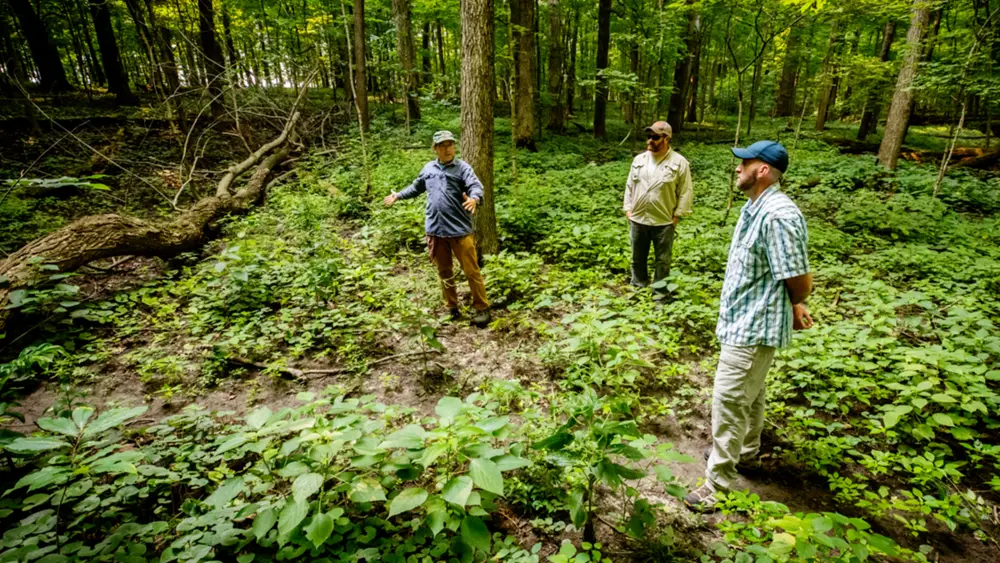
The woods are not open to the public, but I’m here with University of Illinois Urbana-Champaign natural areas coordinator Jamie Ellis, natural areas research specialist Nate Hudson, entomology professor Brian Allan and photographer Brian Stauffer. Today, Ellis and Hudson are guiding us on a tour of Trelease Woods and Brownfield Woods, two ancient 60-acre forests preserved by the university for teaching and research purposes. The university acquired Trelease Woods in 1918 and Brownfield Woods in 1939. They are remnants of the Big Grove, an old-growth forest that once covered about 15 square miles in present-day Champaign County.
We stop at one of the first big trees we see on the edge of Trelease Woods. It’s a white ash, with what Ellis estimates is a 60-centimeter (24-inch) diameter. Like most of the ash trees in central Illinois, this one is dead, killed by the emerald ash borer. As big as it is, it’s one of the lesser arboreal giants of these woods.
Ellis guides us off the track and into the interior of Trelease Woods. We step around and over logs in all stages of decay. The decay is part of the plan, Ellis says. The U. of I. Committee on Natural Areas, which oversees more than 1,000 acres of university-owned territory, decided after a long debate that site managers would not actively interfere with the natural ecological processes underway in these two parcels. This means no tree cutting, no removal of brush and no prescribed burns.
Ellis and Hudson do manage the perimeter – clearing bush honeysuckle from the forest edges, where this and other invasive plants often get their start. They toss fallen trees and branches back into the forest to keep paths and roadways clear. And apart from clearing invasive garlic mustard from the forest every spring, they don’t touch the interior of the forest.
“What falls in here, stays in here,” Ellis says.